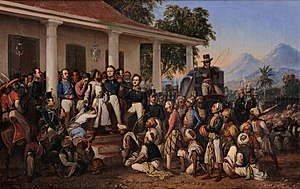
Prince Diponegoro, also known as Dipanegara, was a Javanese prince who opposed the Dutch colonial rule. The eldest son of the Yogyakarta Sultan Hamengkubuwono III, he played an important role in the Java War between 1825 and 1830. After his defeat and capture, he was exiled to Makassar, where he died at 69 years old.

The Sultanate of Mataram was the last major independent Javanese kingdom on the island of Java before it was colonised by the Dutch. It was the dominant political force radiating from the interior of Central Java from the late 16th century until the beginning of the 18th century.

The Java War or Diponegoro War (ꦥꦼꦫꦁꦢꦶꦥꦤꦼꦒꦫ) was fought in central Java from 1825 to 1830, between the colonial Dutch Empire and native Javanese rebels. The war started as a rebellion led by Prince Diponegoro, a leading member of the Javanese aristocracy who had previously cooperated with the Dutch.

Raden Saleh Sjarif Boestaman was a pioneering Romantic painter from the Dutch East Indies of Arab-Javanese ethnicity. He was considered to be the first "modern" artist from Indonesia, and his paintings corresponded with nineteenth-century romanticism which was popular in Europe at the time. He also expressed his cultural roots and inventiveness in his work.
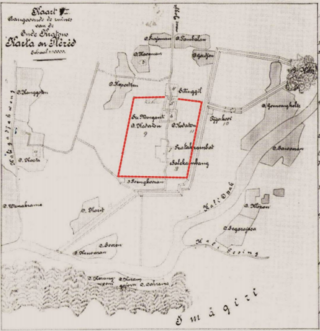
Plered was the location of the palace of Amangkurat I of Mataram (1645–1677). Amangkurat moved the capital there from the nearby Karta in 1647. During the Trunajaya rebellion, the capital was occupied and sacked by the rebels, and Amangkurat died during the retreat from the capital. His son and successor Amangkurat II later moved the capital to Kartasura. It was twice occupied by Diponegoro, during the Java War (1825–1830) between his forces and the Dutch. The Dutch assaulted the walled complex in June 1826, which was Diponegoro's first major defeat in the war.

Hamengkubuwono IV, also spelled Hamengkubuwana IV was the fourth sultan of Yogyakarta, Indonesia, reigning from 1814 to 1823.

Hendrik Merkus, Baron de Kock was a Dutch general and nobleman who served in the Batavian Navy as Lieutenant Governor-General of the Dutch East Indies from 1826 to 1830. He also was Minister of the Interior of the Netherlands from 1836 to 1841.
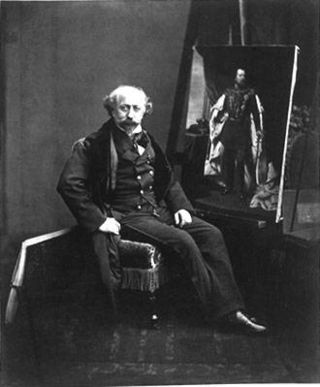
Nicolaas Pieneman was a Dutch painter, art collector, lithographer, and sculptor.

Peter Carey is a British historian and author who specialises in the modern history of Indonesia, Java in particular, and has also written on East Timor and Myanmar. He was the Laithwaite fellow of Modern History at Trinity College, Oxford, from 1979 to 2008. His major early work concentrated on the history of Diponegoro, the British in Java, 1811–16 and the Java War (1825–30), on which he has published extensively. His biography of Diponegoro, The Power of Prophecy, appeared in 2007, and a succinct version, Destiny; The Life of Prince Diponegoro of Yogyakarta, 1785–1855, was published in 2014. He has conducted research in Lisbon and the United Kingdom amongst the exile East Timorese student community for an oral history of the Indonesian occupation of East Timor, 1975–99, part of which was published in the Cornell University journal Indonesia.
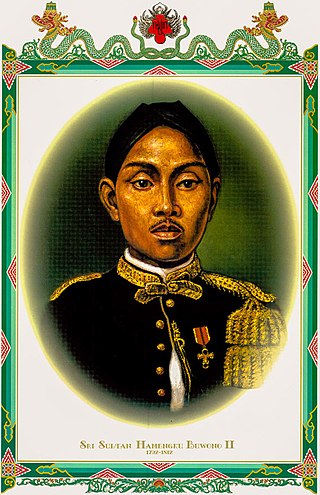
Hamengkubuwono II, born Raden Mas Sundoro, was the second sultan of Yogyakarta 1792–1810, 1811–12 and finally 1826–28 during the Java War.
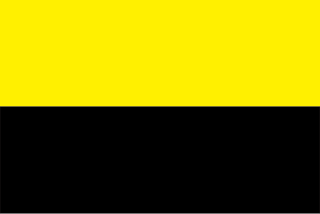
Sultanate of Banjar was a sultanate located in what is today the South Kalimantan province of Indonesia. For most of its history, its capital was at Banjarmasin.

Surakarta Sunanate is a Javanese monarchy centred in the city of Surakarta, in the province of Central Java, Indonesia.

November 1828 is a 1979 Indonesian historical drama directed by Teguh Karya. Production cost an estimated Rp 240 million, making it the most expensive Indonesian movie up to that point. It tells the story of a village struggling against the Dutch colonial military during the Java War, and touches on the themes of nationalism and cultural identity. The movie won 6 Citra Awards.
Friedrich Carl Albert Schreuel, also known as Frederik Karel Albert Schreuel and Jan Christian Aelbert Schreuel, was a Dutch-born painter.
Sasana Wiratama, also known as Museum Monumen Pangeran Diponegoro is a museum complex in Yogyakarta, Indonesia. The complex consists of a museum and a monument which commemorates the struggle of Prince Diponegoro, an 18th-century Javanese prince and a National Hero.

The Arrest of Pangeran Diponegoro is the name of an 1857 painting by Raden Saleh, depicting the capture of Prince Diponegoro by Lieutenant General Hendrik Merkus de Kock on 28 March 1830.

Pakubuwono I, uncle of Amangkurat III of Mataram was a combatant for the succession of the Mataram dynasty, both as a co-belligerent during the Trunajaya rebellion, and the First Javanese War of Succession (1704–1707).

Paku Alam X is the Duke (Adipati) of Pakualaman, a small Javanese duchy in the Special Region of Yogyakarta, Indonesia. He succeeded as Paku Alam upon the death of the previous ruler, his father Paku Alam IX, who died on 21 November 2015. He was formally crowned with the Royal Javanese title of Kanjeng Gusti Pangeran Adipati Arya (KGPAA) Paku Alam X on 7 January 2016, and as stated in the National Constitution, on 25 May 2016, He was sworn and appointed as the hereditary Vice-Governor of Yogyakarta Special Region.
Adipati Soero Adinegoro (1752–1833), also spelt Adipati Suroadinegoro, born Han Sam Kong, and sometimes known as Baba Sam, was a Chinese-Javanese nobleman and government official, famous during his lifetime for the good governance of his territories.
The siege of Yogyakarta took place during the Java War. Javanese rebel forces attacked Dutch troops of the city of Yogyakarta, with initial great success. Javanese rebels looted and burned the city after the initial Dutch forces surrendered. However, after a counteroffensive led by General De Kock, the siege of the city was broken, leading to a Dutch victory.

